OpenSurgery



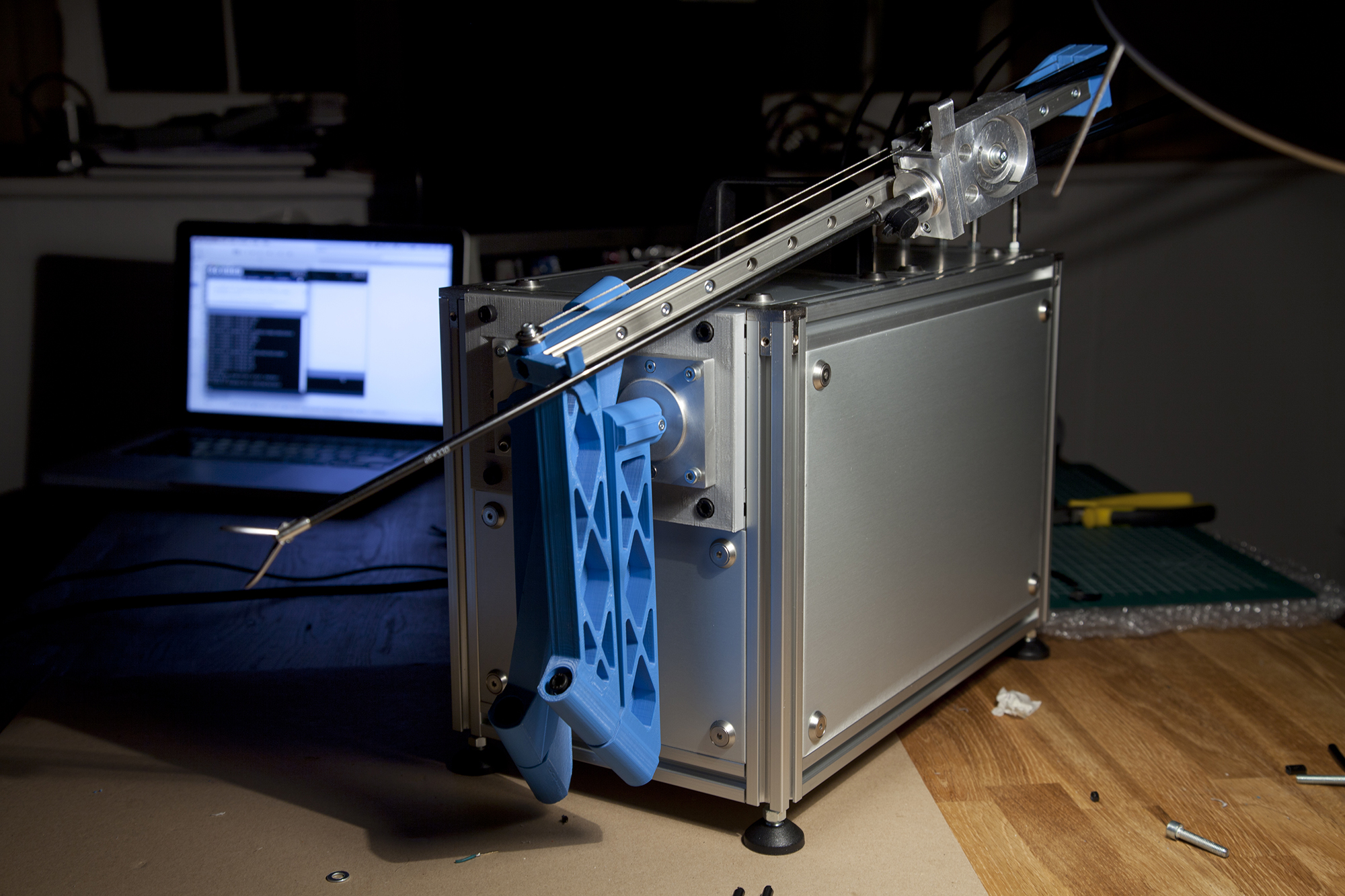
Over the past decade robots have transformed surgery. Anyone who has seen the close up video of a surgical robot peeling a grape and stitching it neatly back together1 will intuitively understand the benefits of bringing robots into the surgery theatre. Intricate machines like the Da Vinci Surgical System allow even long and complicated procedures to be performed with super human precision and dexterity. All while decreasing patient trauma and providing a more comfortable experience for the surgeon.
Robotic surgery builds upon laparoscopic surgery and in short it’s benefits could be summarized by a combination of changing the method of access and reducing the scale of the tools1. A surgeon sitting in an ergonomic control console, a few meters removed from the operating table, uses specialized joysticks to control a variety of tiny surgical instruments attached to robotic arms. Inserted through a series of small keyhole incisions, this effectively allows the surgeon to perform operations inside the patient’s body without the need to create a single large incision. A stereoscopic camera, also attached to one of the robotic arms, provides the surgeon with enhanced 3d vision allowing him to monitor every move precisely. Because of this robotic surgery reduces the risk of complications and readmissions and in general speeds up the recovery process.

With a price tag of up to $2.000.000 however, surgical robots also represent large capital investments that only becomes cost effective after intensive use2 and only if they fulfill on their promises to decrease the amount of time people have to spend in hospital. As such they fit in a type of market driven healthcare innovation that indirectly contributes to the overall rising medical expenditures.
Paradoxically, even though new technologies [like surgical robots] are expanding the range of treatment options available to patients it does so by replacing lower cost options with higher-cost services.3 Resulting in the competition for the scarce medical resources of the health care system growing beyond the capacity to care for everyone. In order to receive medical attention, millions of people unable to afford private health insurance must rely on the public health systems that are hardly able to cope with this demand. Or they will simply have to do without.
Youtube serves as an indicator to this situation. Driven by the lack of affordable alternatives to the professional healthcare system, communities of mainly uninsured Americans use Youtube to share videos showing them performing medical hacks on themselves. Some of these are documented experiments whereas others take the form of full-blown step-by-step tutorials, ranging from how to make your own dental fillings to performing minor amateur surgery.4 All happening outside the scope of healthcare regulations of course.
Although controversial, you can’t help but wonder whether this DIY medical pragmatism could become a model for the development of a more accessible alternative to the costly professional healthcare system.
Based on the ideological development of collective expertise fueled by other than purely economic motives and enabled by digital technologies, there is the idea that you can do almost anything from home on a near professional level without being obstructed by conservative regulations. Returning power and responsibility to the individual and attesting to a sense of self-determination.
What if you could for example create your own DIY surgical robot outside the scope of regulated healthcare?
1 Catherine Mohr, design lead for the Da Vinci Surgical System, gave an interesting talk about the future of surgical robots for ‚Wired Health’ in 2014. In which she also explains her views on the basic benefits of robotic surgery. link
2 Between 250 and 400 cases a year on the Da Vinci Surgical System. link
3 Robert Wood Johnson Foundation link
4 Anne-Marie Geurink is a Dutch graphic designer who, in 2011, has made a DIY medical encyclopedia by documenting found medical tutorials on YouTube at the time. link



There have been several attempts within the robotics community to come up with cheaper and more portable surgical robots. Several of these could be real contenders to the dominant da Vinci Surgical system technically, however the strict medical regulations complicate the road to the operating room.
One machine in particular that is worth mentioning is the RAVEN II Surgical robot. Initially developed with funding from the US military to create a portable telesurgery device for battlefield operations. This impressive looking machine with it’s two wing like arms is valued at $200.000 so it represents almost a 90% cost reduction in comparison to the Da Vinci, but it also represents a different mindset entirely. All of the software that is used to control the RAVEN II has been made open source, meaning that other people could use and improve it or re-appropriate it to fit their needs. Currently there is only so much need for very specific surgery robot control software, however what it means is that this system is very useful to researchers in universities to test new ideas and software approaches to robotic surgery. The tradeoff is that it might take a while before the RAVEN II will be fully embraced by regulatory and commercial worlds - if ever. The Raven unfortunately doesn’t have the required (and often costly) safety and quality control systems in place, required by regulation to allow it to be used on humans.
Although the story of the RAVEN II is inspiring, $200.000 makes that it would likely still be out of reach for most medical hacker communities. So in order to test the plausibility and preferability of such an endeavor, for the past five months I have been trying to build a DIY surgical robot for around $5000 by using accessible prototyping techniques like laser cutting and 3d printing and by sourcing as many ready-made parts as I could find.
After consulting with experts from the medical sector as well as with roboticists it became clear that there are three major challenges to the design of a surgical robot, (theoretically) capable of performing laparoscopic surgery. Firstly there are the tools: during a single operation a surgeon would switch between various types of tools, so a robot would either have to have many of them or they should be able to be interchangeable. Furthermore the instruments used in laparoscopic surgery are extremely small, so making them yourself would be a big challenge. Secondly, there is the fact that anything that comes into contact with the human body has to be sterile to reduce the risk of infection. In hospitals therefore most tools are stainless steel so that they can be sterilized by placing them in an autoclave. A bulky machine that uses high pressure and hot steam that is not very likely to be accessible to many people. Thirdly there is the type of motion a surgical robot should be able to make, whereby a fixed point of rotation in space is created where the tool enters the body through an entry port - or 'trocar'. The trocar needs to be stationary so as to avoid tissue damage.

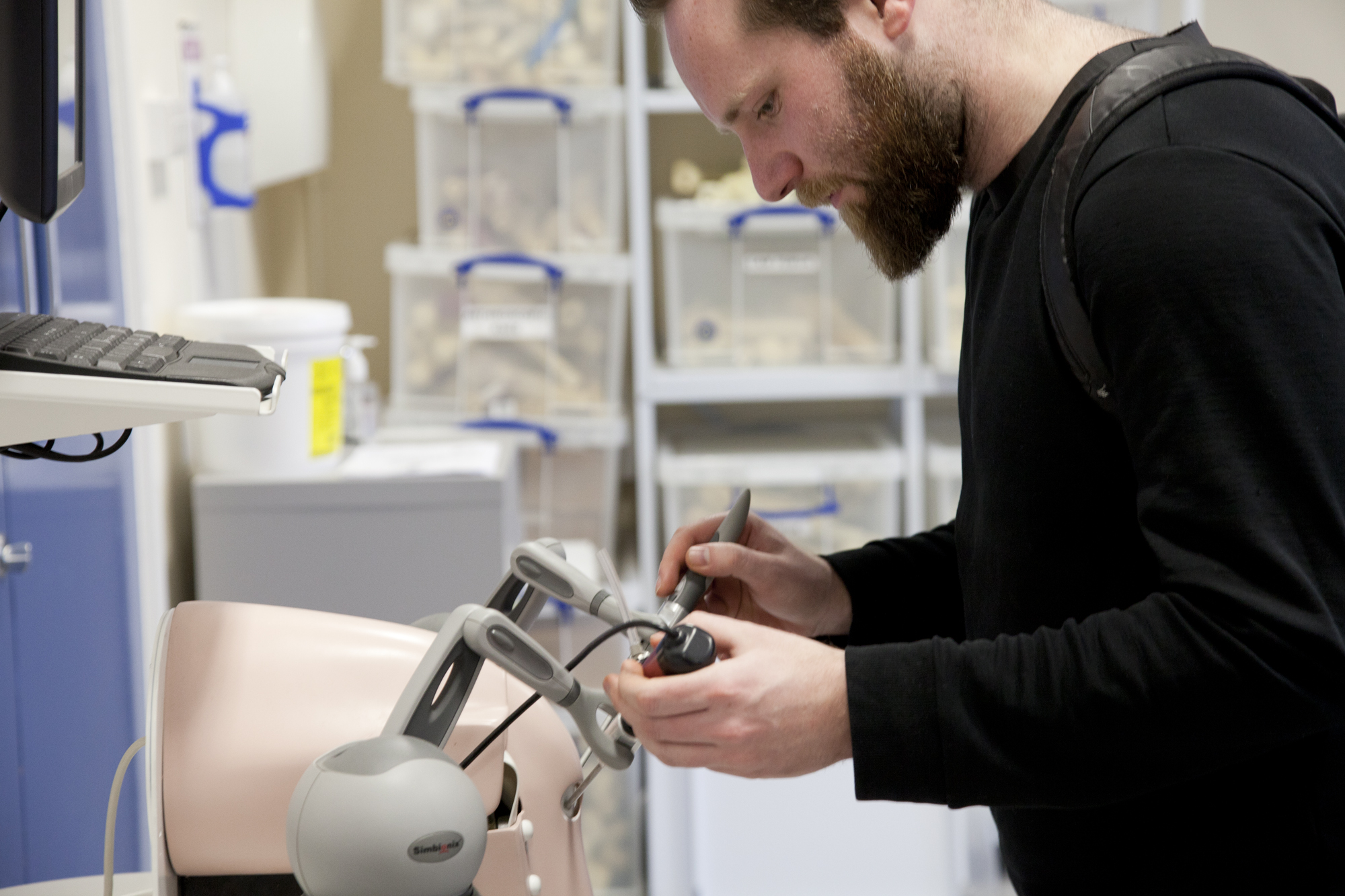
As it turns out it is in fact really easy to buy laporoscopic instruments online. After a few unsuccesfull attempts at getting some shipped over from the US by ordering from Ebay, I switched to using Alibaba, where you can order them directly from their Chinese manufacturers. For around $40 a piece + shipping they can even be shipped in sterile packaging if required. The fact that you can order directly from the manufacturer also makes sure that you can have a steady supply and order different types of instruments. So not only could you base a design off of them, it also means that you could simply dispose of the tools after use and order new ones. Besides selling laparoscopic instruments, many companies on Alibaba even sell fairly affordable peripheral equipment required for surgery, like monitoring equipment, camera modules and CO2 insufflation pumps for example.
Another realization during the staring phases of the project was that you could simply re-appropriate domestic devices to account for not having access to hospital infrastructure. A simple domestic oven turned to 160 degrees centigrade for 4 hours, would be a simple alternative to an autoclave, and for plastic parts you might even be able to use a microwave.
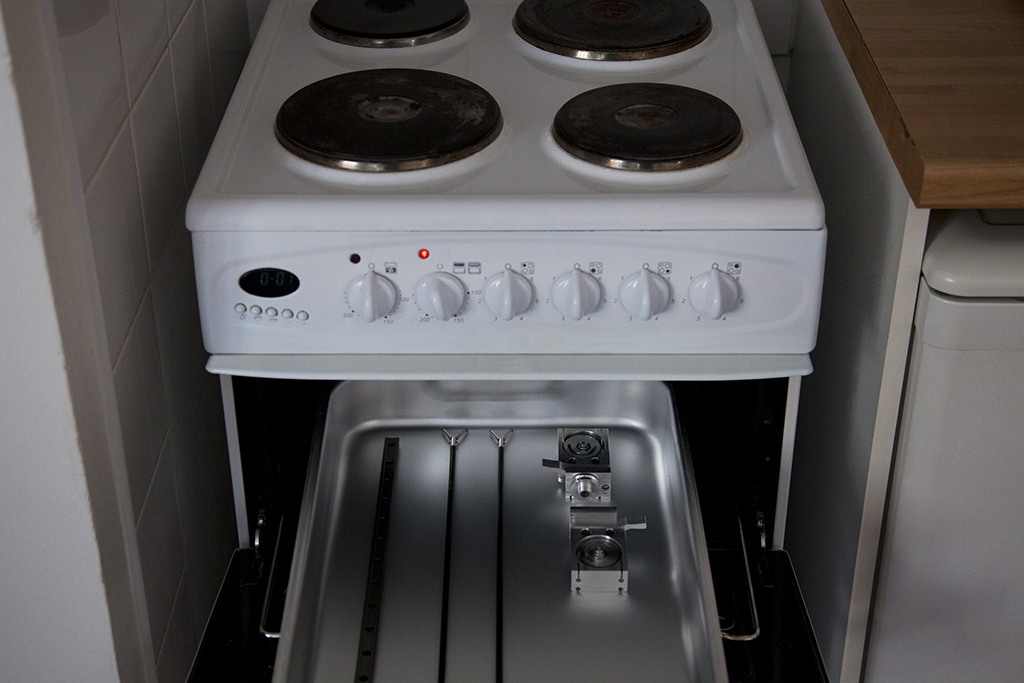
So as it turned out designing the mechanical system was actually the most complicated part of the process as it required lots of iterations. Working my way through some of the more conventional solutions I ended up with a design that uses four 3d printed parts controlled by two DC servo motors that rotate around a central pivotal point.
The electronics to control the robots are pretty much copied directly from designs used in 3d printer communities. The reasoning behind this is that this would not only increase the availability but also community support when needed. The software in turn was build with Processing - the famous open source scripting language - for the same reasons.
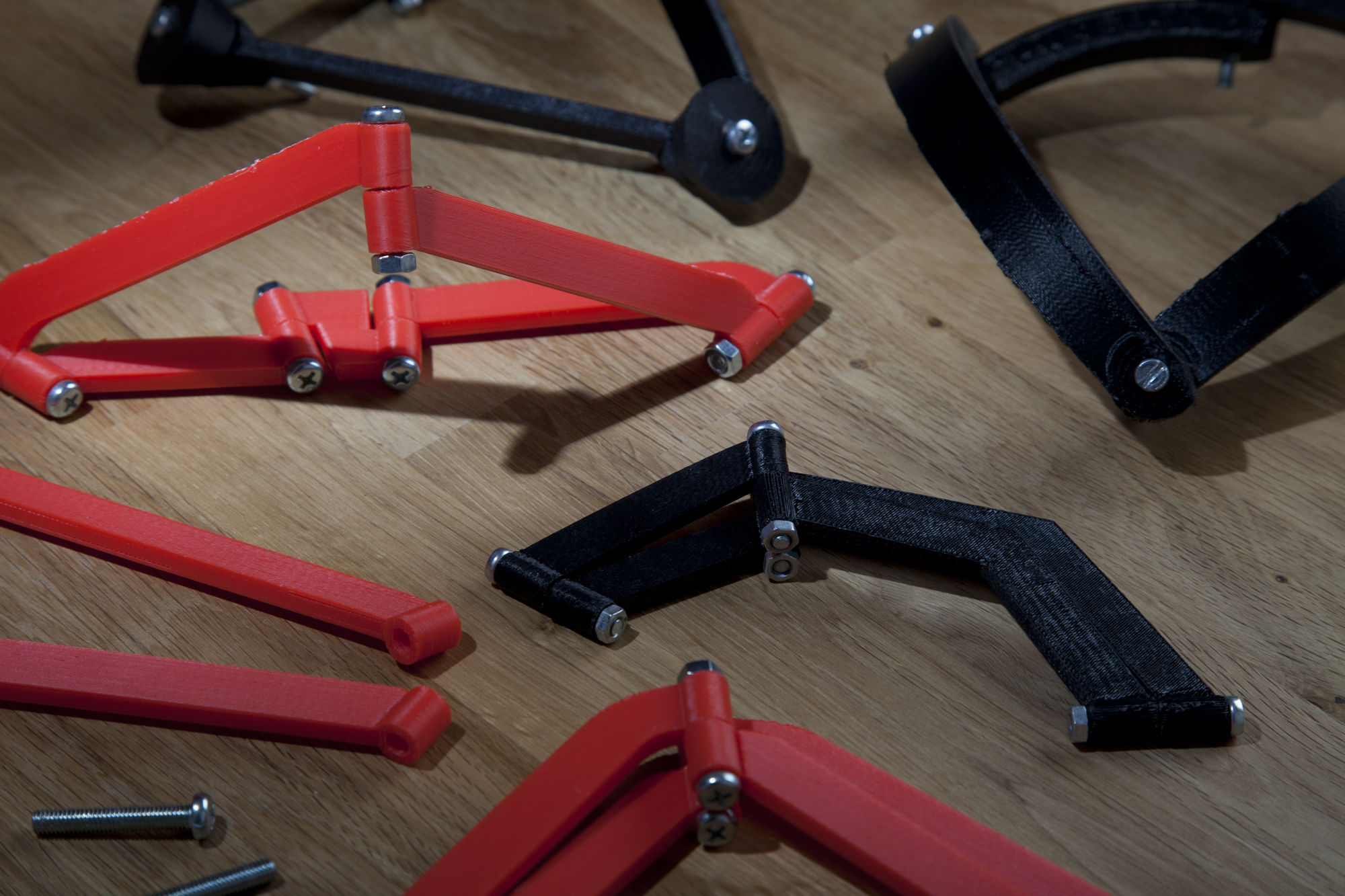
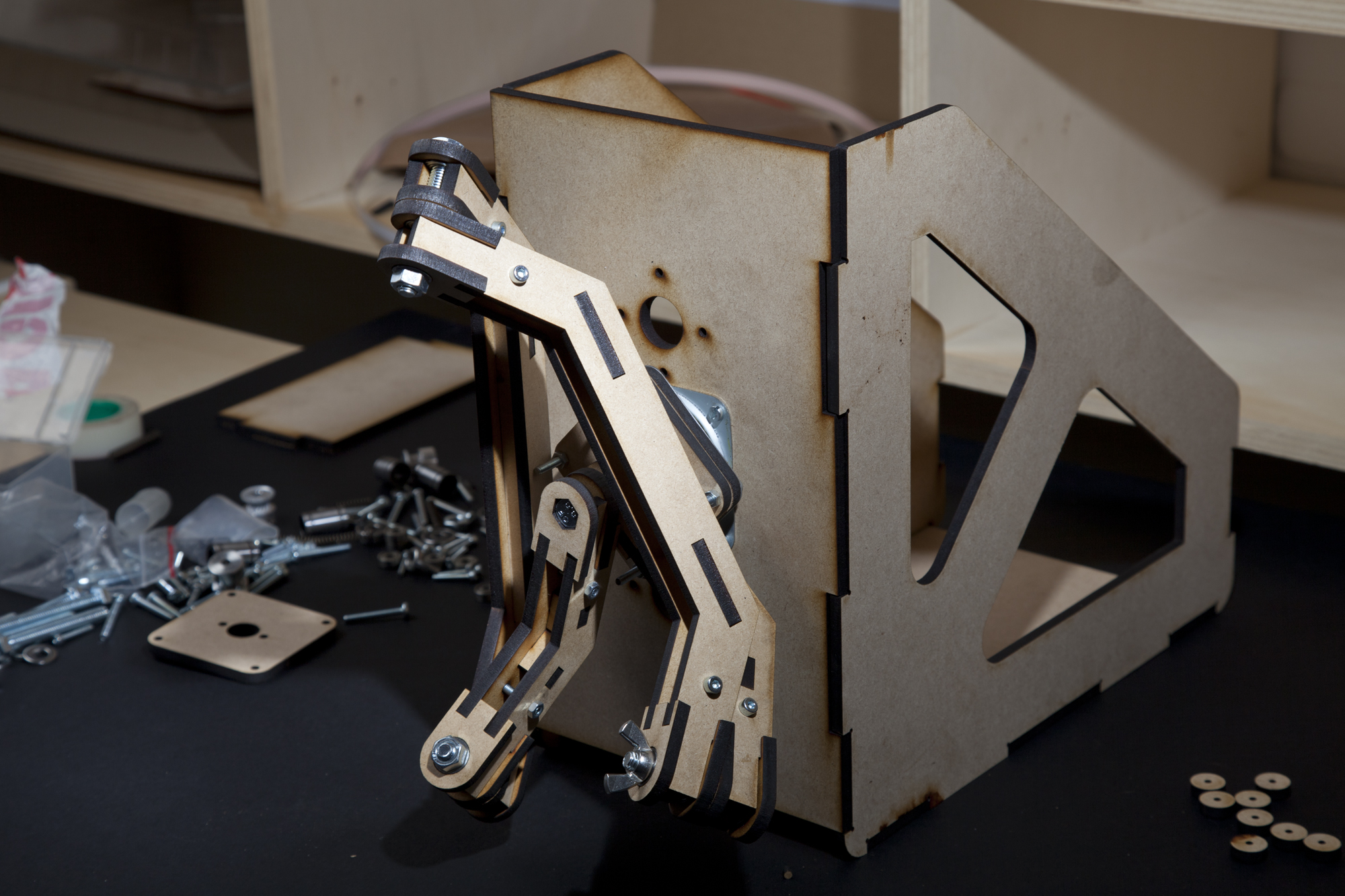
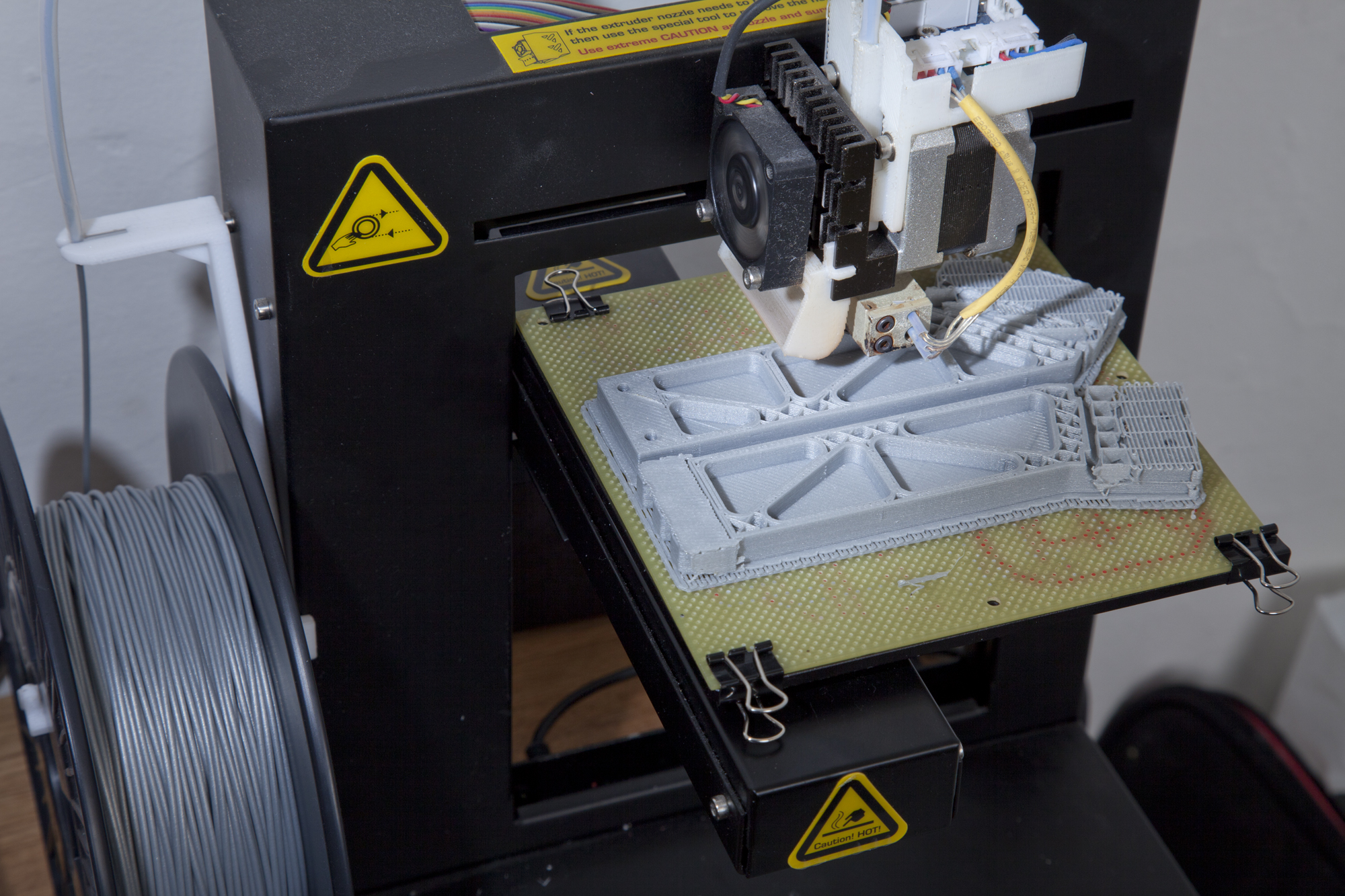
Although I wouldn’t recommend to attempt surgery with it just yet, after five months of iteration it does in fact move. And based on my experiences the concept of a DIY surgical robot is surprisingly plausible. If you would be able to build a community of makers who bring the same amount of attention and dedication to building surgical tools as they do to designing 3d printers and cnc machines these days, I believe accessible DIY surgery equipment would be within reach.
The biggest limitation is that you would still require a trained surgeon, or someone with extensive knowledge of the human anatomy and knowledge of surgery, to perform the operation. However I don't think it is to hard to imagine that there would be surgeons who share in the same ideology and become part of such communities.
The legality of that however remains questionable and it’s preferability off course debatable.


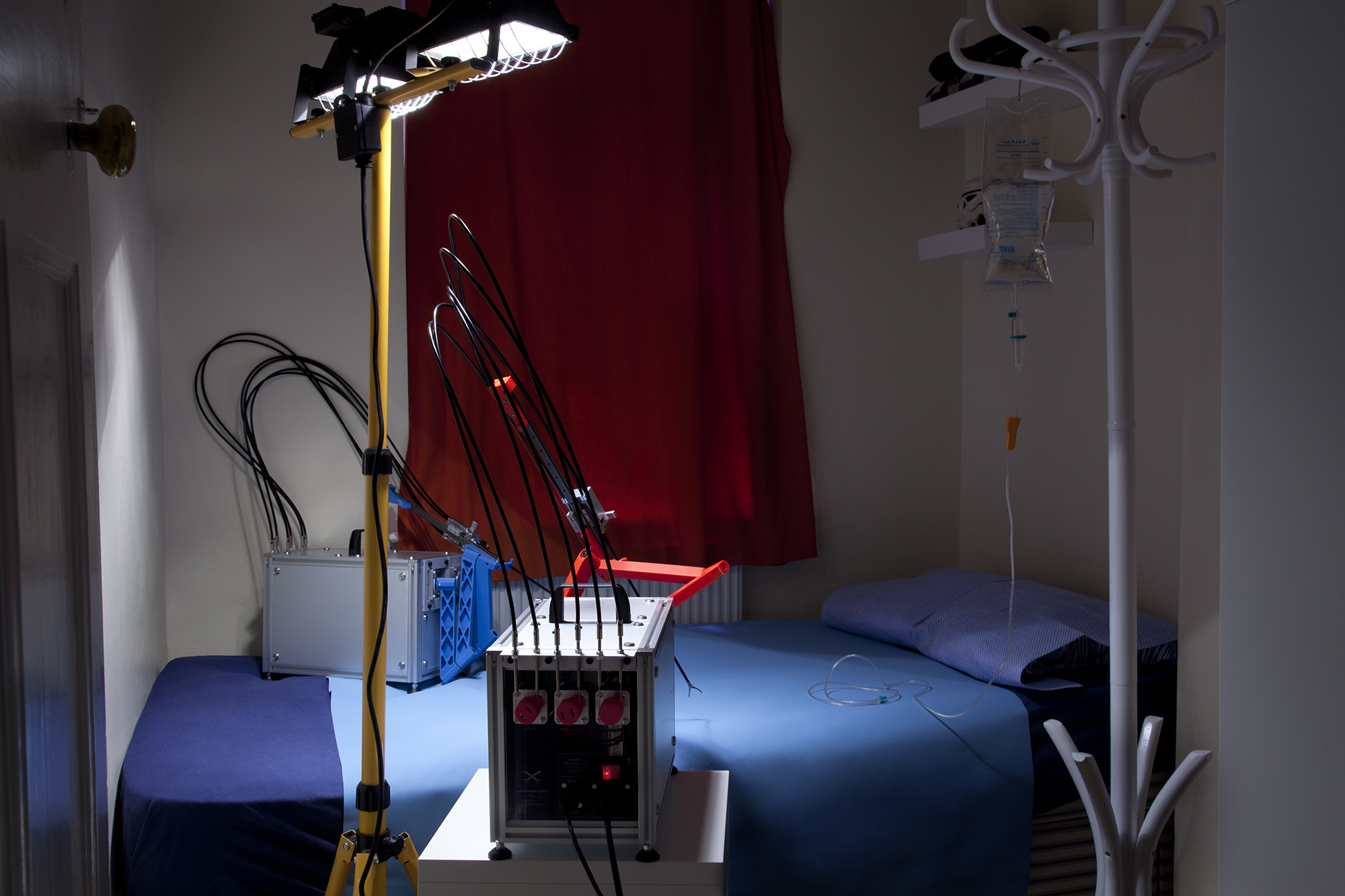
During the starting phase of the project I somewhat naively intended the project to become open source. Because of this I took great care in trying to avoid using any parts that were recognizable in commercial medical robots and I tried to develop my own mechanisms. However as it turns out it is almost impossible to design anything related to robotic surgery without infringing upon someone else’s intellectual property. As most of the fundamental concepts that allow robotic surgery are patented, this also explains why not many alternative systems make it to market. At least not until those patents run out.
In principle there is nothing wrong with patents. They were invented to protect the hard work done and risks taken by inventors to create new inventions, by providing the patentholder with the option to exclude non licencies from entering the market with copies or similar products, for a limited time - usually 20 years - and in a specific territory -usually a country-. In return patentlaw requests the design principles to be made public. This means that the inventor gets the time to develop his ideas safely into a profitale product or service from which he can then reap the undiluted benefits for a period before the competion enters the market. But by requesting the idea to become public it patentlaw also makes sure that if the initial inventor fails to turn his ideas into a profitable product the ideas will not be lost but they can be used by others to build off of, stimulating innovation.
However where intellectual property law begins to fail in my opinion is where large companies are monopolizing over extensive patent portfolios with very broadly defined patentens on concepts and mechanisms. Especially within the medical sector this is painful, firstly because your are directly preventing certain groups of people from getting access to care that might save their life and secondly because a lot of healthcare related research is publicly funded. Meaning the government, and the tax payer, is initially taking most of the risk, for little return of the profit later on as companies have bought back their intellectual property and become privatized. Besides that the cost associated with patents means that it is difficult for startups who don’t have the capital yet to enter the medical market with revolutionary ideas, because even if they only marginally seem to infringe on often very broadly defined patents it becomes hard to get investment. So the challenge for innovation policy is to come up with a system that only pays for innovations that are worth it, but without shutting down the potential for disruptive new ideas to have a longterm effect.
The potential disruptiveness in DIY medical equipment lies in the fact that as long as you make parts protected by intellectual property in private and for non commercial purposes they are theoretically exempted from patent infringement. Difficulties however would likely arise from sharing files for such systems online. Possible solutions would be to share files in peer-to-peer networks that are essentially private between select communities that thus could innovate freely. The second alternative for long term development of accessible tools could be found in places where regulations are less prohibitive and that are not covered by most intellectual property, but where the need is greatest. In these areas where this type of technology could be developed and tested with more freedom, there is the potential for it to advance and feed back into the current systems in a different form. How this would work, and what the legality of this approach would be still requires more research however.
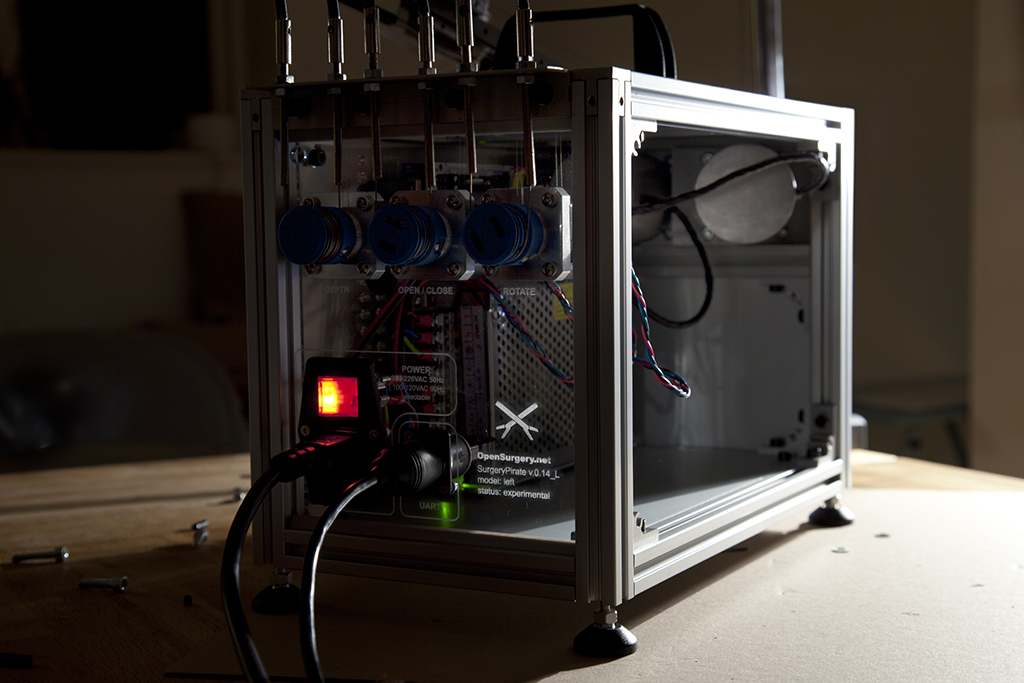

*OpenSurgery has no connection to any company or body currently producing, selling or distributing robotic and/or surgery related devices. The DIY surgery robot is not intended for (commercial) application and currently serves only academic purposes.
*None of the systems, subsystems or parts have been tested or approved by regulatory bodies.
*Please be aware that performing surgery on yourself or others is not encouraged. Performing surgery is dangerous and can lead to serious injuries, up to and including death. Moreover, performing surgery without the necessary training and qualifications is likely to be illegal, depending on local laws.
*Any medical information published in relation to the OpenSurgery project is intended for informational purposes only and does not substitute for informed medical advice from a health care professional.
*Building and/or operating robots of any sort should not be attempted without the the required understanding of handling high-voltage electrical devices and operating actuated mechanical systems. Necessary precautions should be taken.
*OpenSurgery does not warrant for and does not assume any risks with regard to any information provided in it’s publications or related publications by third party media. Furthermore OpenSurgery will take no responsibility in injuries or death inflicted due to the (mis)use of any hardware or information related to the OpenSurgery project.
*None of the views expressed in relation to the OpenSurgery project are directly representative for the personal or professional opinions from the experts consulted.
OpenSurgery is a project by Frank Kolkman www.frankkolkman.nl © 2015, made possible with the generous advice and support from many wonderfull people.
Special thanks to:
*Dr. Martin Jaere _ Medical advice
wwwf.imperial.ac.uk/blog/msklab/2012/10/16/martin-de-jaere-and-psi-patient-specific-instruments/
*XXXXX XXXXXX _ Medical robotics advice
* Anne-Marie Geurink _ DIY medical consulting
www.annemariegeurink.nl
* Juuke Schoorl _ Photography
www.juuke.nl
* Riccardo Lardi _ Software / interface
www.riccardolardi.com
* Marcel Helmer _ Software / interface
www.marcelhelmer.de
* Henrik Nieratschker _ Website development
www.henriknieratschker.de
* Leo Kolkman _ Cnc machining
* Marco Heezen _ 3d printer & materials support
www.kunststofshop.nl
I would also like to thank all the tutors and staff from the Design Interactions department at the Royal College of Art for their guidance and criticism.
www.design-interactions.rca.ac.uk
The initial idea that led to the OpenSurgery project was developed during a 4 day workshop at the Kyoto Institute for Technology - D-lab. Many thanks to Julia Cassim and her staff for inviting us to Japan and to my team mates Henrik Nieratschker, Matthieu Cherubini & Jaime Garcia for an inspiring week.
www.d-lab.kit.ac.jp
www.henriknieratschker.de
http://mchrbn.net
Furthermore the design for the DIY surgery robot builds upon the shoulders of giants and uses knowledge and parts generated and shared freely by the open source communities of: Reprap, Arduino & Processing.
www.arduino.cc
www.reprap.org
www.processing.org